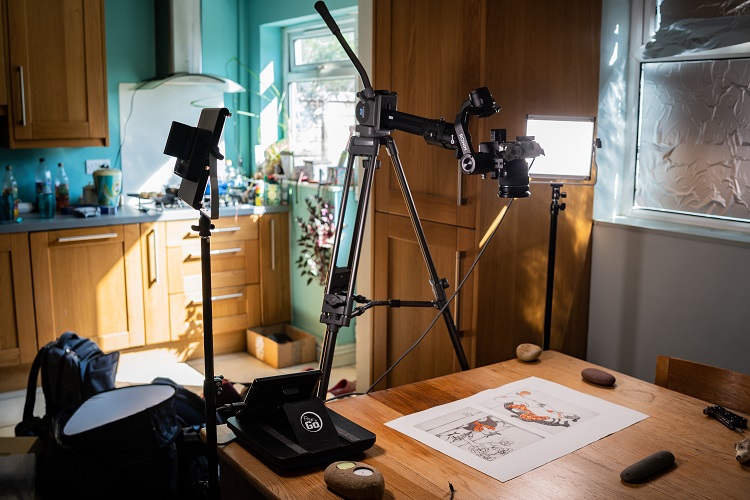Tag: Craft
-

Beyond Words – behind the scenes
C.A. Savage initially created the prints without any specific plan for how they would be shared. Her goal was simply to find sustained inspiration from the stories she heard each month. But as the year of printmaking neared completion, the question inevitably raised its head. What next? My answer – and I’m very glad that everyone…
-
Clowning for Storytellers – A Masterclass with Fred Versonnen
Coming up on the 14th July, Beeston Tales is bringing you the next in its program of masterclasses for storytellers. Internationally acclaimed performer Fred Versonnen is stopping off with us as he travels from Belgium to The Festival at the Edge. Clowning is a beautiful way of making connections. Connections with your audience, connections with…
-
The Room Behind the Bookcase – Making it your own
Click here to Listen! Or subscribe with Feedburner. Want to make a traditional story your own when you tell it? We ask Nell Phoenix how. Show notes in the comments.
-
Mimesis and Diegesis
‘Mimesis’ and ‘Diegesis’ are two terms from drama and narrative theory that I tend to use a lot, so I thought I’d take a moment to explain them here. To put it simply, both mimesis and diegesis describe ways of presenting a story. In mimesis, the story is acted out. In diegesis, the story is…
-
The Pentamerone: Part 1
The Pentamerone is a collection of fifty folk tales written by Giambattista Basile in the Neopolitan dialect. It’s based on oral stories he collected while he was traveling around Venice, Crete and wherever he’d find people who would tell him a tale. It’s a phenomenal collection, containing just about every major motif of the European…
-
The Drama Instructor
There’s a story I’ve heard about a drama instructor. He was berating his students one day for failing to grasp the most basic points of theatre. “You!” He said to one of his students. “Walk onto that stage, say ‘Look at that moon!’ and point upwards.” And the student did. And when she had finished,…
-
Review: The Nothing Show
I was at Larmer Tree Festival telling stories. It was magical, but I’m not here to tell you about that. I’m here to tell you about Stewart Wright’s “The Nothing Show”, a half-hour performance piece that was so good I saw it twice. http://stewartwright.wordpress.com/category/nothing-productions/ It’s hard to describe the piece without spoilers. It’s a mime,…
-
The Skeletal Village, (2/3)
One of the things I want to do here, on this site, is talk openly about the practice and craft of storytelling. I am at that stage in my development where I’m shedding the mantle of being a young storyteller, of being an emergent artist, and looking to stand amongst my peers in my own…
-
Daniel Morden discusses the art of storytelling
Good clip of Daniel Morden and Sarah Moody! http://www.youtube.com/watch?v=HqTRBPKPVBs&feature=autofb “It’s a sort of cinema of the mind.” Gorgeous stuff! And he’s a very fine gentleman as well.
-
The Allegorical Village, (1/3)
I feel very strongly that storytellers need to be ambassadors, pioneers. It is such a niche practice that most people in this country do not know what storytelling is. They imagine it’s reading or that it’s something for children. I’ve seen people, exposed to storytelling for the first time as adults, who find the experience…